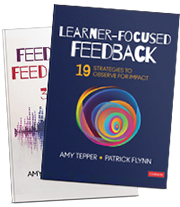2020 has been a tumultuous sea and we are definitely not on a pleasure cruise…more like a three-hour tour that goes on forever.
We have all missed our learners. The connection we experience with their energy and spirit when we are together is why we get up everyday. We have been so grateful to begin engaging again in professional learning sessions with teams of teachers, mentors, coaches, and leaders as schools settle into their reopening plans. Just seeing their faces virtually has brightened our days. Seeing students’ faces, either through the screen or in the classroom at a distance again has similarly re-energized teachers and administrators. However, we also hear stories of fatigue, frustration, and crying in the parking lot. While spirits are filled by each moment of contact with students, the challenges educators face are overwhelming and on-going changes, destabilizing.
In last month’s blog, we focused on students’ social-emotional learning (SEL) and well-being and the critical work to help teachers support their learners. This month, we turn our attention to supporting our teachers’ by helping those who support them to recognize connections between feedback and well-being of their teachers.
Save Our Ship (SOS)
So many feel like they are sinking. They are sending up flares, but they will not abandon ship. They are working to achieve unimaginable feats. They want to reach all learners, sometimes falling short after hours of planning…especially those teachers desperately trying to teach groups who are face-to-face and those virtually at home simultaneously. Teacher efficacy is in crisis everyday.
Albert Bandura’s research helps us understand that raising levels of self-efficacy can provide a way to self-control emotions. Teachers with higher self-efficacy, therefore, will more effectively manage stressful events and situations.
“Self-efficacy represents a way to self-control individual’s emotions which can bring multiple advantages in the area of stress.”
(Procedia, Social and Behavioral Sciences, 2013)
When in a constant state of challenge, the stress they experience in work can influence confidence judgments. Teachers begin to believe they do not possess the knowledge or skill to effectively teach their students.
It becomes a tumultuous spiral as feeling unable to respond effectively to stressful situations can further decrease levels of self-efficacy, making a teacher even more prone to experience distress in the future.
Feedback is the Lifeline
We know also from Bandura that feedback (“verbal persuasion or boosts”), especially focused on causal attribution (or when focused on impact on engagement and learning as we are promoting, in alignment to Hattie’s work), is a source of efficacy for teachers. Through our feedback focused on growth and cause and effect, we can help teachers feel successful, recognize what they can control, lift spirits, and reduce stress. New strategies or steps can feel more attainable.
Across two books, we identified 50 total strategies for leading the learning through observation and feedback, but two rise to the surface as absolutes this year.
Just as in our classrooms with students, we must work to build relationships with our teachers, listen, and create opportunities and platforms for them to be able to communicate all types of needs. In addition, we must create opportunities to serve as a second set of eyes and ears, able to collect evidence so that we can engage in ongoing feedback cycles for growth and support all year.
Therefore, leading the learning this year means:
- We Build. Align to previous professional learning, help teachers build on prior skills and knowledge, and allow teachers to identify effective replicable practices that have positive impacts on families and student engagement/ learning (and celebrate these!). We all feel less stressed about new learning when we connect to what we already know and already do well.
- We prioritize. Meet teachers where they are by targeting support in stages collaboratively identifying priorities. We cannot encourage teachers to learn new apps to provide students with options for assessments (our stage 2-3) if they are still struggling with camera and laptop placement during synchronous teaching (our stage 1). We all feel less stressed when we tackle things in bite-sized pieces.
- We connect. Help teachers make connections among priorities, effective practices, desired outcomes, ongoing professional learning and current student needs–the focus of our last blog–eliminating a feeling that everything lives in its own silo. Connection-making is key. We all feel less stressed when we see we do not have yet another thing to add to our plate.
These core principles can guide observation/evidence-collection, feedback, collegial conversations, professional learning design, and goal setting, and should be informed by identified needs and an accurate understanding of impact. When there is a clear picture of why outcomes are what they are, those who support teachers facilitate problem solving and generate reflection.
Fair Winds & Following Seas
As we continue to move forward this year with uncertainty and change, consider how you can become a constant, a beacon, and support for your staff by planning observation and feedback cycles for growth.
Be the lifeline. Be the partner. Be the cheerleader. With honest feedback about how teachers are impacting engagement and learning, you can increase efficacy and decrease stress. Help them sail ahead even when winds are not fair and seas are tumultuous.
Need further guidance? Contact us directly and check out our resources and new webinars on our site
Let’s stay connected – Sign up for our mailing list
Twitter: Amy @ATep46 Patrick @ReVISION_Learng
Order our books Feedback to Feed Forward: 31 Strategies to Lead Learning and Learner-Focused Feedback: 19 Strategies to Observe for Impact today!






Leave a Reply